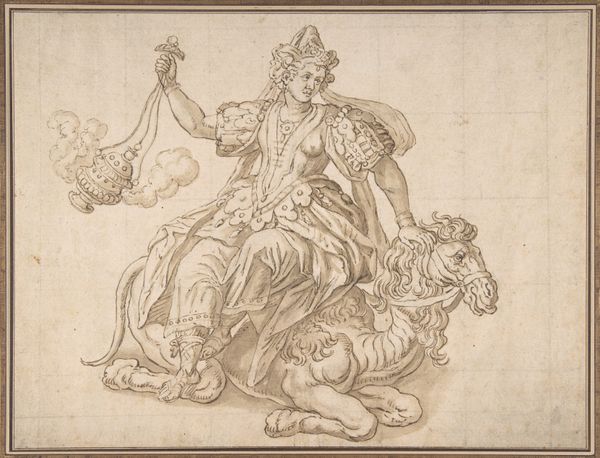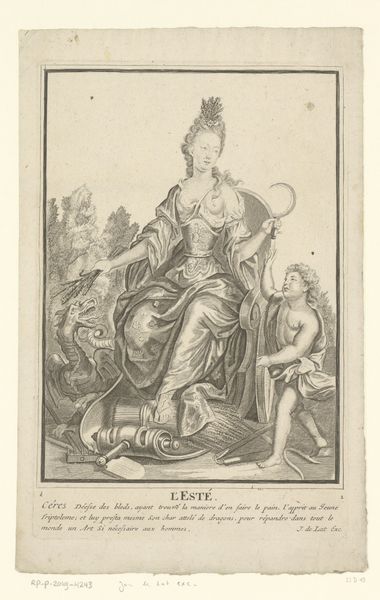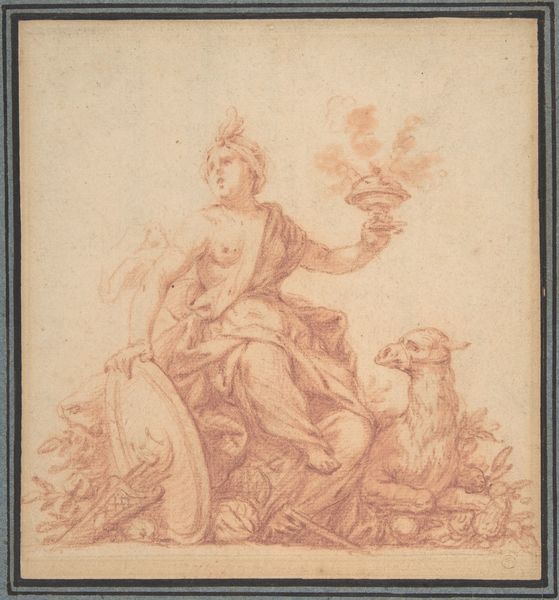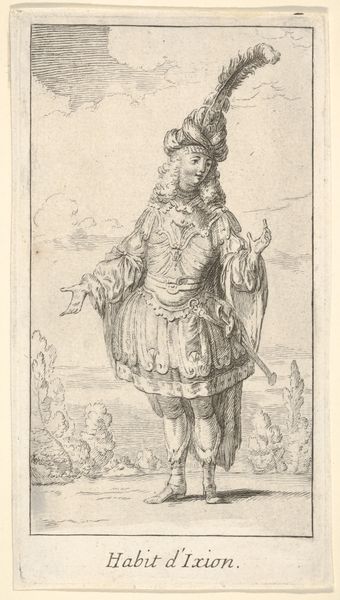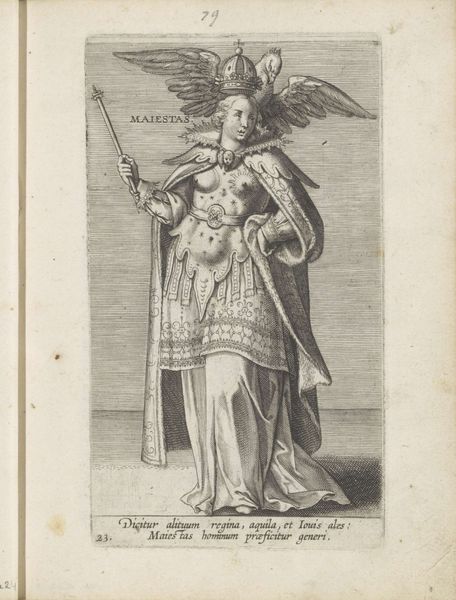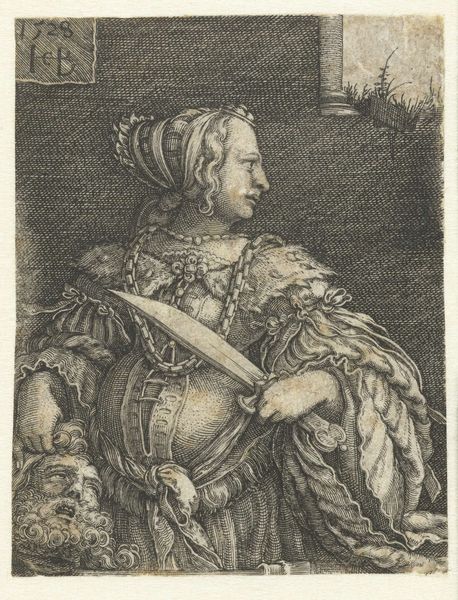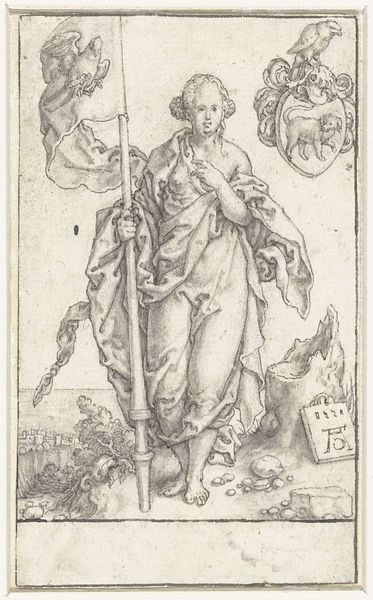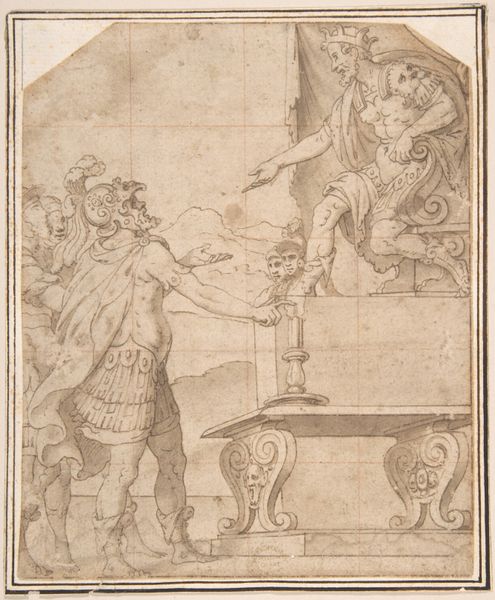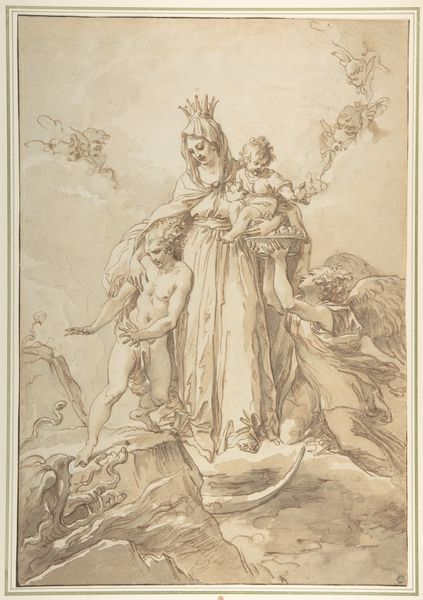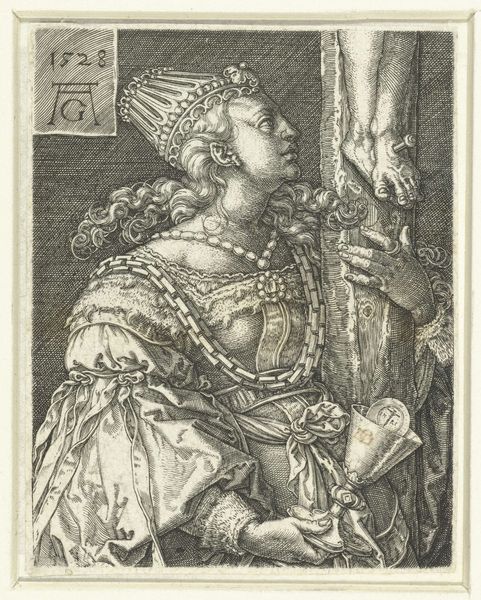
Allegory of Europe, from "The Four Continents" 1500 - 1600
0:00
0:00
drawing, print, pencil, charcoal
#
portrait
#
drawing
#
allegory
# print
#
charcoal drawing
#
figuration
#
11_renaissance
#
pencil
#
charcoal
Dimensions: 9 1/4 x 12 in. (23.5 x 30.5 cm)
Copyright: Public Domain
Curator: This striking image, "Allegory of Europe, from 'The Four Continents,'" was created sometime between 1500 and 1600 by an anonymous artist. It's currently held at the Metropolitan Museum of Art. A charcoal and pencil drawing—the figure seems both delicate and powerful at once. Editor: The first thing that strikes me is the mix of vulnerability and command in her posture and expression. Despite the regal symbols like the crown and scepter, there's a pensive quality to her gaze. A woman depicted mid-thought? Curator: Exactly. These allegories functioned as political and social commentaries. Representing Europe as a queen acknowledges power, but placing her amongst symbols like grapes and flowing garments introduces ideas of wealth, prosperity, even fertility tied to the land. And she's bare-breasted, pushing boundaries! Editor: The grapes could allude to both the abundance of Europe, or the classical Dionysian rites. The fruit, heavy with symbolism—fertility, sacrifice, and communal ecstasy all in one small form. Is she offering or withholding, given that slightly downcast glance? Curator: Let’s consider how female allegorical figures functioned during this time. They embodied territories and ideals, reflecting contemporary values and anxieties surrounding female rulers like Queen Elizabeth I. Was she strong enough? Would she bring prosperity or ruin? These prints fostered conversation and cemented ideas. Editor: Indeed. It feels as if this is as much about cultural projection as it is about an actual geographical space. The attire itself becomes a cultural text—signifying class, power, trade relationships through precious adornment... Every visual element works on a symbolic register. Curator: It's the power of the image to codify and reinforce cultural narratives. Consider what happens when those images become challenged or subverted... How are European identities redefined when these archetypes are disrupted? This image captures the very moment those questions begin to percolate! Editor: Looking closer now, this piece highlights the power in visual encoding and our endless fascination in decoding visual cues to discern something profound about history itself and this artistic piece. Curator: I find myself captivated by the possibility for an artist like this who is now "anonymous," perhaps challenging expectations for an increasingly connected society.
Comments
No comments
Be the first to comment and join the conversation on the ultimate creative platform.
